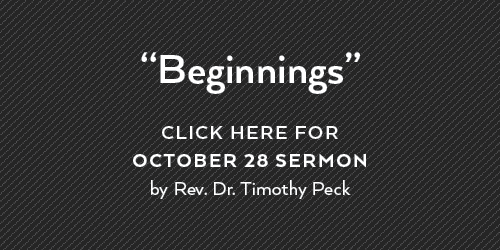Monday
Read Revelation 3:1-6, 14-22; 19:7-8
How is the true Church—Christ’s faithful followers, His promised Bride and eternal reward—doing? How is anyone doing in this extended season of COVID, domestic and global strife? Although God continues at work and the Spirit continually calls many to saving relationship with Jesus, church health “numbers” are mixed.
The following statistics come from a 2022 study by Zurlo, Johnson and Crossing. While the global population grew 32% since 2000, growth in the self-described “Christian” population lags, increasing about 30% concurrently. “Christians” make up about 32% of humankind. Between 2000-2022, the self-identifying “Muslim” populace grew 52%, now comprising nearly 25% of all people. Increases within Hinduism mirror Christianity’s, “Hindus” still accounting for 13½% of those on earth. Surprisingly, “nonreligionists” (“atheists” and “agnostics”) grew only 12% collectively from 2000-2022, representing 11% of all people.
“Evangelicals” and “Charismatics/Pentecostals”—the groups generally associating their faith with being “born again” by the Spirit (though many within “Catholic” and “Orthodox” denominations likewise would claim being born again)—grew 50% as a group since 2000, now comprising 13% of earth’s population.
More important than mere numbers, however, are the quality and depth of our faith. In the “Western world,” the greater culture appears to be decidedly “post-Christian,” evidenced by entertainment, social norms and politics. Some denominations, seeking to “stay relevant” as a basis for “survival,” submit to worldly methods and message versus teaching the Bible. These may be akin to those Jesus warned in Revelation 2-3, particularly the “lukewarm” church of Laodicea and the “dead” church of Sardis.
As always, however, God remains in control and His will shall prevail. Upon Jesus’ still-future Second Coming, “the great multitude in heaven” will joyously revel in “the marriage of the Lamb … and His Bride (the true Church) … [His faithful adorned] with fine linen, bright and pure” (Revelation 19:1, 7-8). Satan and his cohort will be destroyed; God will re-create heaven and earth into the “New Jerusalem.” (Revelation 20:10, 13-14; 21:1-7). God’s peace-giving and joy-producing promise upon our dwelling eternally with Him: “He will wipe away every tear … death shall be no more, neither shall there be mourning, nor crying, nor pain anymore” (Revelation 21:4). Hallelujah and amen!
Questions
What are some differences between any self-proclaimed church and the “true Church”? Which global faith trends do you find most alarming?
Prayers
For our missionary with International Fellowship of Evangelical
Students (IFES) in Turkey
Last month IFES had a joyful baptism ceremony at the church in Antalya, Turkey. Eighteen people were baptized, including many university students. Pray for them, that they will grow day by day in this new life and become faithful disciples of the Lord.
Tuesday
Read Exodus 19:5-6; Matthew 18:18-20
Yesterday we considered global faith trends. Today we delve into the state of faith in America and the related health of the U.S. Church. “The [post-WWII] American church [strengthened] … In 1952, a record 75% of Americans said religion was ‘very important’ … Church affiliation during the 1950’s jumped from 55% to 69%. … [As] the U.S. population went from 150 to 180 million [by 1960], … almost one-half of all Americans were attending church regularly … Religion flourished … in every class, race, region, and denomination. …
“The mainline Presbyterian Church had 4.25 million members in 1965, but by 2000, they numbered 2.5 million and in 2020, 1.25 million. Other major denominations have shown … similar precipitous declines. … The [American] church was becoming a social service agency and political lobbying bloc, performing functions that could be done far better by secular organizations. … ‘If I want to work for inclusion and justice … why [do so via] … a Christian church with all its baggage?’ …
“By the late 1960’s … as people followed the culture’s direction … they began to come to radically different conclusions about … right and wrong. American society began to splinter … As [America] began to break apart, mainline Protestantism began to slide. … The decline of mainline Protestantism, once the unofficial religion of America, was both a cause of and a result of this breakdown in American society. It both paved the way to the secularization of culture (rather than resisting it) … [becoming] the victim of the same wave it had facilitated.” (Tim Keller)
“[By] 2018 and 2019, 65% of American adults described themselves as Christians … down [from 77%] over the past decade. Meanwhile, the religiously unaffiliated … people who describe their religious identity as atheist, agnostic or ‘nothing in particular,’ [grew to] 26%, up from 17% in 2009. … Currently, 43% of U.S. adults identify with Protestantism, down from 51% in 2009. And one-in-five adults (20%) are Catholic, down from 23% in 2009.” (Pew Research Center)
Lest we slip into dismay, remember that God is neither disheartened nor surprised. Jesus declared, “In Me you may have peace. In this world you will have trouble. But take heart! I have overcome the world” (John 16:33).
Questions
Which U.S. Christianity trends do you find most alarming? What cultural trends have many American churches contributed to?
Prayers
For our missionary with International Fellowship of Evangelical
Students (IFES) in Turkey
Pray for the university students who participated in the summer outreach. Our missionary and the IFES staff started very good relationships with them, and some of them came to church. May these beginning relationships be completed with the opening of hearts to the Lord.
Wednesday
Read Isaiah 41:8-10; Mark 14:26-31; Luke 18:8
I’ve experienced two extreme COVID-19 stances among friends and family. Several label the pandemic a political ploy, part of a government conspiracy to increase control and suppress rights. A couple have militantly resisted legislated safety practices. The opposite response: those who have almost never left their homes, fearfully masked up even while there, driving alone, or taking solitary walks outside.
COVID has rocked U.S. churchgoing. “Since the start of the pandemic, in-person church attendance dropped a staggering 45% nationwide, according to … analysis of churches across more than 3,000 U.S. counties.” (ABC News) “According to … [the] Barna Group, one in three practicing Christians dropped out of church completely at the beginning of COVID-19. Moreover, church membership in the U.S. dropped below 50 percent for the first time in 2020, [per] Gallup data dating back to 1940. … Some empty pews may be replaced by online worshipers, but there is no available data to support this.” (Christianity Today)
The Bible calls Jesus “Immanuel … God with us” (Matthew 1:23). God is faithful and “will not leave … or forsake [us]” (Deuteronomy 31:8). But are many of us still with Him? Alluding to His later return, Jesus asked the disciples, “When the Son of Man comes, will He find faith on earth?” (Luke 18:8). It is hard to know amidst such uncertain times.
Regardless of your pandemic stance, there are godly responses to it, particularly as the “new normal” unfolds. First, pray for and genuinely encourage our pastors. Some might think of church leaders as not needing reassurance due to their “super-spirituality,” but this view is misguided. Revered ancient prophet Elijah struggled with depression, as did influential British pastor C.H. Spurgeon and other church pillars. This pandemic has challenged pastors in unprecedented fashion.
Pray also for and lovingly encourage those who have fearfully avoided in-person church attendance. Some may have medical conditions subjecting them to extreme risk. Regardless of their reasons, guilting or judging them is unloving and incompatible with Jesus’ ways. Pray fervently for our pastors and “COVID shut-ins.” After all, remember that “the battle for our lives, and the lives of … [loved ones] and our nation, is waged on our knees.” (Stormie Omartian)
Questions
Which extreme reaction to the pandemic do you tend toward? Do you pray for Glenkirk Church’s pastoral leadership? How will you support and encourage “COVID shut-ins”?
Prayers
For our missionary with International Fellowship of Evangelical
Students (IFES) in Turkey
Last week our missionary and his wife helped at a Christian Kids Camp where at least 15 children accepted Jesus as their Lord and Savior. Pray that these children will stay strong and grow in their decisions to follow the Lord.
Thursday
Read Isaiah 66:18-20; 1 Timothy 4:11-16; Colossians 3:11
Revelation 9:10 portrays an ideal for the Bride of Christ, the true Church: “a great multitude … from all tribes and peoples and languages, standing before the throne and before the Lamb.” Jesus’ earthly ministry commenced when He “was about thirty years old” (Luke 3:23). Given His human age, our Lord—the eternal “Word … [through whom] all things were made” (John 1:2-3)—was called “a little child” prophetically (Isaiah 11:6). By today’s generational classifications, He’d be a “Millennial”—though One altering eternal history. Furthermore, Jesus wasn’t white, but ethnically Semitic.
Per Glenkirk’s updated 2022 Mission Study, “surrounding served communities are 54% white, 30% Hispanic, and 8.5% Asian. … The fastest-growing ethnic group in [neighboring] cities is Hispanic/Latino. As a congregation, Glenkirk skews older compared with the average age of the surrounding communities and is considerably ‘whiter’ than its served communities. The church’s ‘Gen X’ population (ages 36-55) is representative … but Millennials (ages 13-35) are significantly under-represented.”
If Glenkirk could begin looking more like its served communities, both in ethnicity and age demographics, it would draw closer to the biblical images of Jesus’ Bride. Should the church’s related motivation for greater “youth and diversity” be “relevance” and “better numbers”? No—we touched upon those related perils Monday!
Note, however, that “more than eight-in-ten … of those born between 1928 and 1945 describe themselves as Christians (84%), as do three-quarters of Baby Boomers (76%). In stark contrast, only half of Millennials (49%) describe themselves as Christians; four-in-ten are religious ‘nones,’ and … [10%] identify with non-Christian faiths.” (Pew Research Center) If we aim faithfully to “make disciples of all nations” (Matthew 28:19), the fields are ripe among increasingly “non-Christian,” younger generations.
Glenkirk’s current Nominating Committee has worked to find biblically-qualified 2023 Elder, Deacon and Nominating Committee candidates among covenant partners, aiming to represent the various ministry areas and generations along with the diversity increasingly reflecting Glenkirk’s served communities. Glenkirk’s new Associate Pastor, Kate Wallace Nunneley, is 30-something. And you, the congregants, have a role to play here also. Continually invite others to join you in worshiping at Glenkirk. If invitees are younger and/or have “diverse” backgrounds, terrific! Intentionally share Christ—invite others to meet Him, the divine Millennial and Savior.
Questions
Why was Jesus referred to as “a little child” in the Bible? Which aspects of Glenkirk’s demographics “look good” to you? Which trouble you?
Prayers
For our missionary with International Fellowship of Evangelical
Students (IFES) in Turkey
Our missionary and IFES are preparing for a conference with university students at the end of August. Please pray for each student who will join in that gathering. May they return to their cities, blessed by the conference and more fully devoted to the Lord.
Friday
Read Revelation 21:1—22:5
“I saw no temple in the [New Jerusalem], for its temple is the Lord God the Almighty and the Lamb. And the city has no need of sun or moon to shine on it, for the glory of God gives it light, and its lamp is the Lamb.” (Revelation 21:22-23)
John’s future vision upon Christ’s return offers amazing revelation, particularly regarding the Church. God will re-create heaven and earth, merging them eternally into the “New Jerusalem” (Revelation 21). “There [will be] no Church in [the New Jerusalem]. … No Church—that is the defiance of religion.” (Henry Drummond)
Should any be discouraged by anticipated eternal idleness—“harp-playing among the clouds”—note: “No other [faith] which has a Heaven ever had [one] like this. … All other Heavens have been Gardens, Dreamlands—more or less aimless. … Christianity is different from … religions. … It moves among real things. Its sphere is the street, the marketplace, the working-life of the world. … Wherever real life is, there Christ goes … Christ’s gift to [humankind] was life, a rich and abundant life … [which] does not show itself in abundant dreaming, but in abundant living … among [the] real and tangible.” (Drummond)
God’s future re-creation of heaven and earth reinforces Jesus’ declaration, “The Kingdom of God is in your midst!” (Luke 17:21) Jesus personified the Kingdom; we’re called to the same, here and now! “In every City throughout the world today, there is a City descending out of Heaven from God. Each one of us is daily building up this City or helping to keep it back. … [Jesus] did not stop life to do some special thing which should be called religious. His life was His religion. … His pulpit was the hillside … His workshop was the world. … He was the Son of Man.” (Drummond)
The Church is not a building; it is God’s people doing God’s will for His glory wherever there is a need. The future, “ideal” Church can be realized today—as we worship and serve. Such a “Church” will be organic, not programmed nor confined to a campus on Sundays. Will you be “the Church” 24/7 wherever you are?
Questions
What is the “New Jerusalem”? Why will there be no need for either a Temple or Church there? If “the Church is not a building,” what are the implications of this statement?
Prayers
For our missionary with International Fellowship of Evangelical
Students (IFES) in Turkey
Continue to pray for our missionary’s wife’s visa situation, that she may be able to obtain a Turkish Visa. For over two years, foreigners have been facing visa problems in Turkey, and some visa requests are being denied.
Sources
- Monday’s global faith statistics are from a study by Gina A. Zurlo, Todd M. Johnson, and Peter F. Crossing, “World Christianity and Religions 2022: A Complicated Relationship;” International Bulletin of Mission Research, Vol. 46 (1), January 2022.
- Tim Keller’s quotes can be found at https://quarterly.gospelinlife.com/decline-and-renewal-american-church-the-decline-of-the-mainline/.
- ABC News’ quote is from https://abcnews.go.com/Health/covid-19-pandemic-forces-nationwide-reckoning-american-churches/story?id=82448256.
- Pew Research Center’s quotes are from https://www.pewresearch.org/religion/2019/10/17/in-u-s-decline-of-christianity-continues-at-rapid-pace/.
- Christianity Today’s quotes are from https://www.christianitytoday.com/ct/2022/january-web-only/attendance-decline-covid-pandemic-church.html.
- Stormie Omartian’s quote can be found at https://www.goodreads.com/work/quotes/16419465-the-power-of-a-praying-woman-bible-prayer-and-study-helps-by-stormie-o.
- Glenkirk Mission study quotes are from the updated study, published and available as of February 2022.
- Henry Drummond’s quotes are from his essay, “The City Without a Church,” viewable at www.henrydrummond.wwwhubs.com/city.htm.


